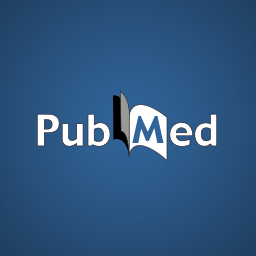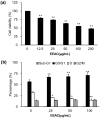Antrodia cinnamomea is a polyporaceous medicinal and native fungus in Taiwan. In this study, we found that AC-SPS-F3, a sulfated glucan from A. cinnamomea, reduced lung cancer cell viability via inhibition of EGFR and mTOR activity. The co-administration of AC-SPS-F3 and cisplatin synergistically inhibited lung cancer cell viability. We identified AC-SPS-F3 was a sulfated β-(1→4)-d-glucan with two long 1,6-branches in each repeat unit. The FT-IR absorption at 1341 cm-1 and 887 cm-1 confirmed the existence of sulfates. The proposed repeat unit of AC-SPS-F3, including the types of main skeleton and side chains, as well as the position of the minor galactopyranosyl and mannopyranosyl residues, were proposed according to the 1D and 2D NMR spectra, shown as follows: The features for the proposed repeat unit of AC-SPS-F3 included two long β-(1→6)-Glcp branches, a very high ratio of sulfate substitution, and partial 2-O and 4-O substituents evenly distributed on the β-(1→6)-Glcp branches. The present study is first to characterize the highly branched sulfated polysaccharides and elucidates its anti-cancer functions.
Health News
The purpose of this study was to investigate the inhibitory activities of ethanolic extracts from Antrodia cinnamomea (EEAC) on lung cancer. Cell proliferation and cell cycle distribution were analyzed using (3-(4,5-Dimethylthiazol-2-yl)-2,5-diphenyltetrazolium bromide) (MTT) assay and flow cytometry, respectively. Wound-healing assay, Western blotting, and a murine tumor model were separately used to examine cell migration, protein expression, and tumor repression. Our results showed that EEAC induced cell cycle arrest at the G0/G1 phase resulting decreased cell viability in A549 cells. Moreover, EEAC up-regulated the growth-suppressing proteins, adenosine 5′-monophosphate-activated protein kinase (AMPK), p21 and p27, but down-regulated the growth-promoting proteins, protein kinase B (Akt), mammalian tarfet of rapamycin (mTOR), extracellular signal-regulating kinase 1/2 (ERK1/2), retinoblastoma protein (Rb), cyclin E, and cyclin D1. EEAC also inhibited A549 cell migration and reduced expression of gelatinases. In addition, our data showed that tumor growth was suppressed after treatment with EEAC in a murine allograft tumor model. Some bioactive compounds from EEAC, such as cordycepin and zhankuic acid A, were demonstrated to reduce the protein expressions of matrix metalloproteinase (MMP)-9 and cyclin D1 in A549 cells. Furthermore, EEAC enhanced chemosensitivity of A549 to paclitaxel by reducing the protein levels of caveolin-1. Our data suggests that EEAC has the potential to be an adjuvant medicine for the treatment of lung cancer.






